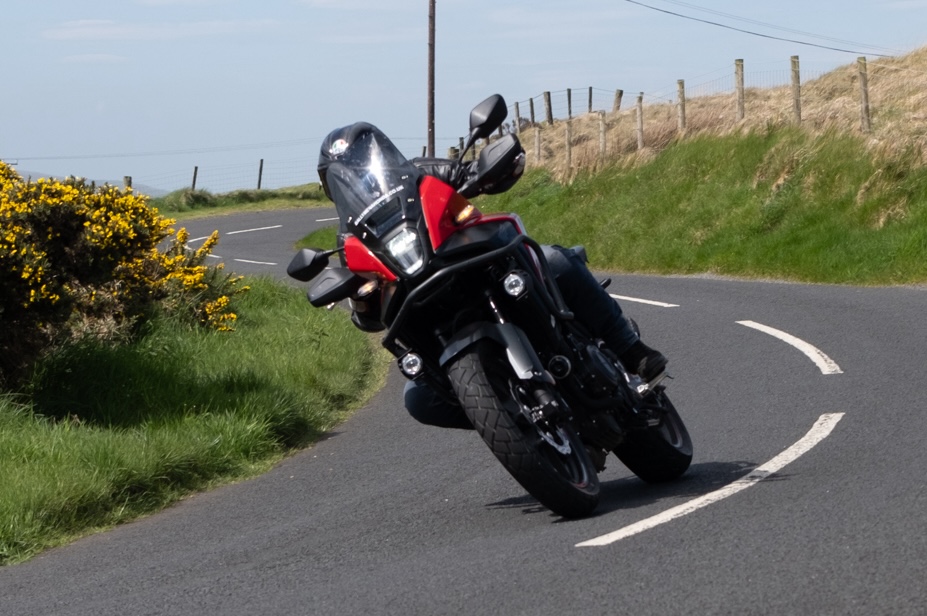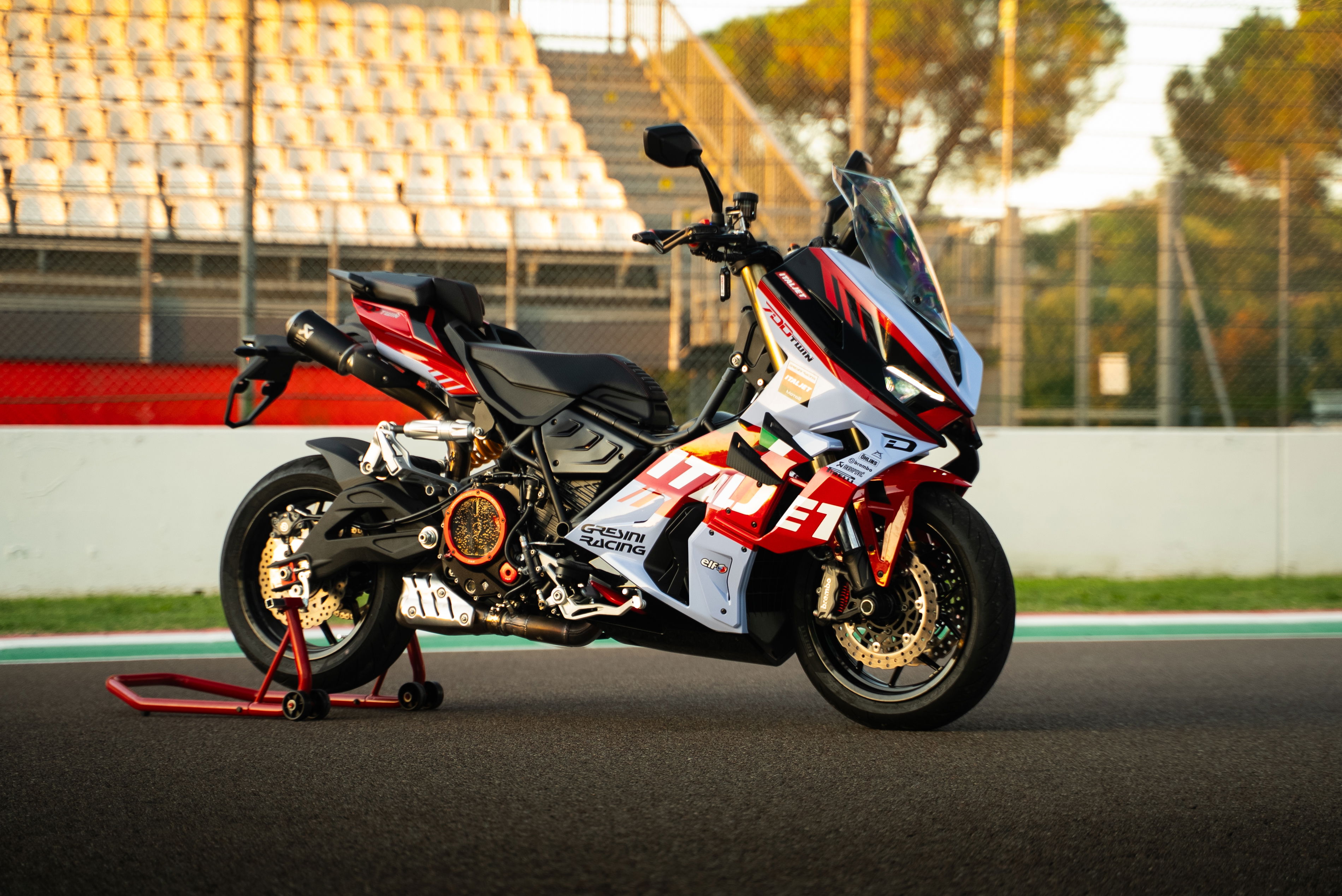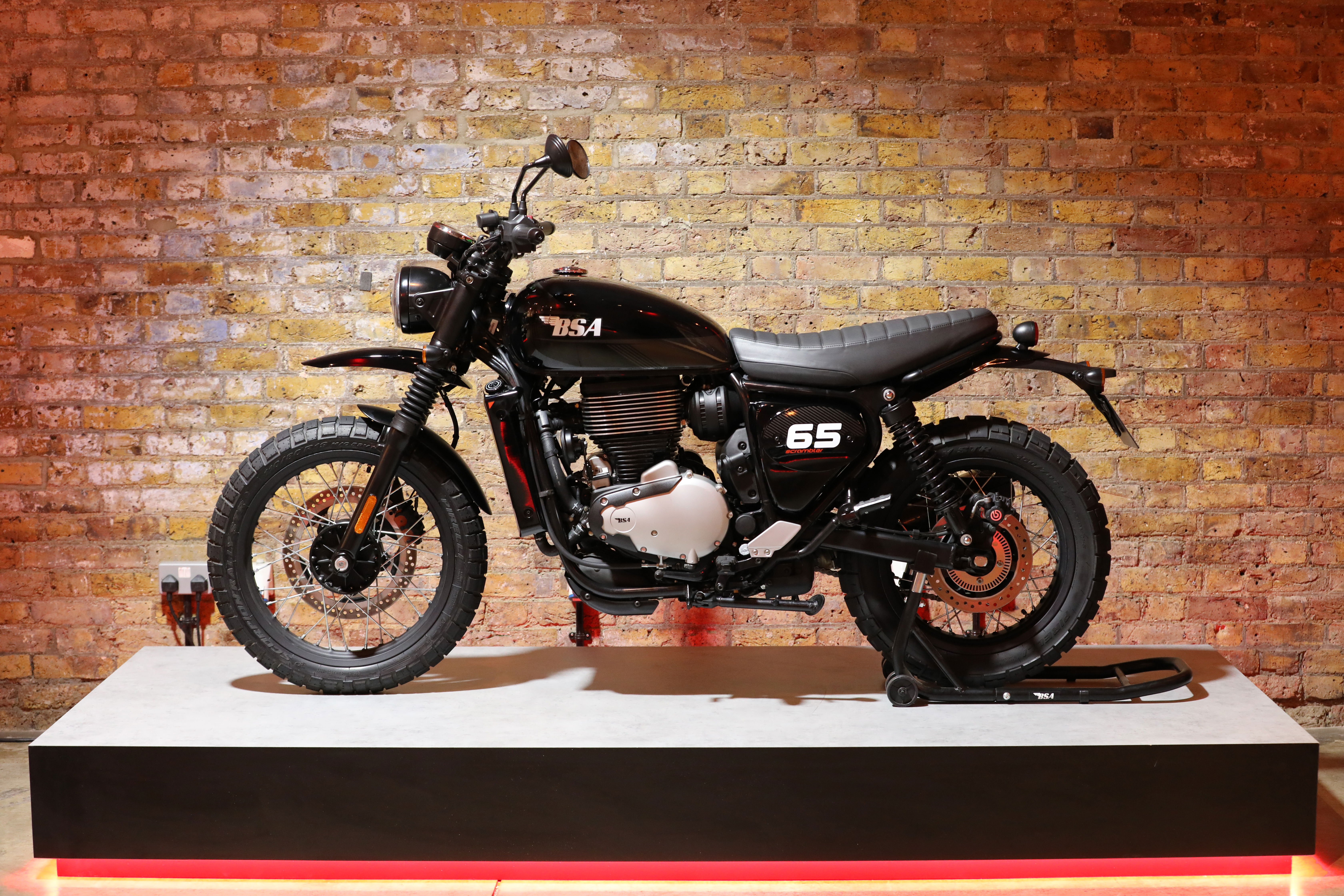First ride: KTM 1290 Super Duke GT review
For sports-touring in a hurry
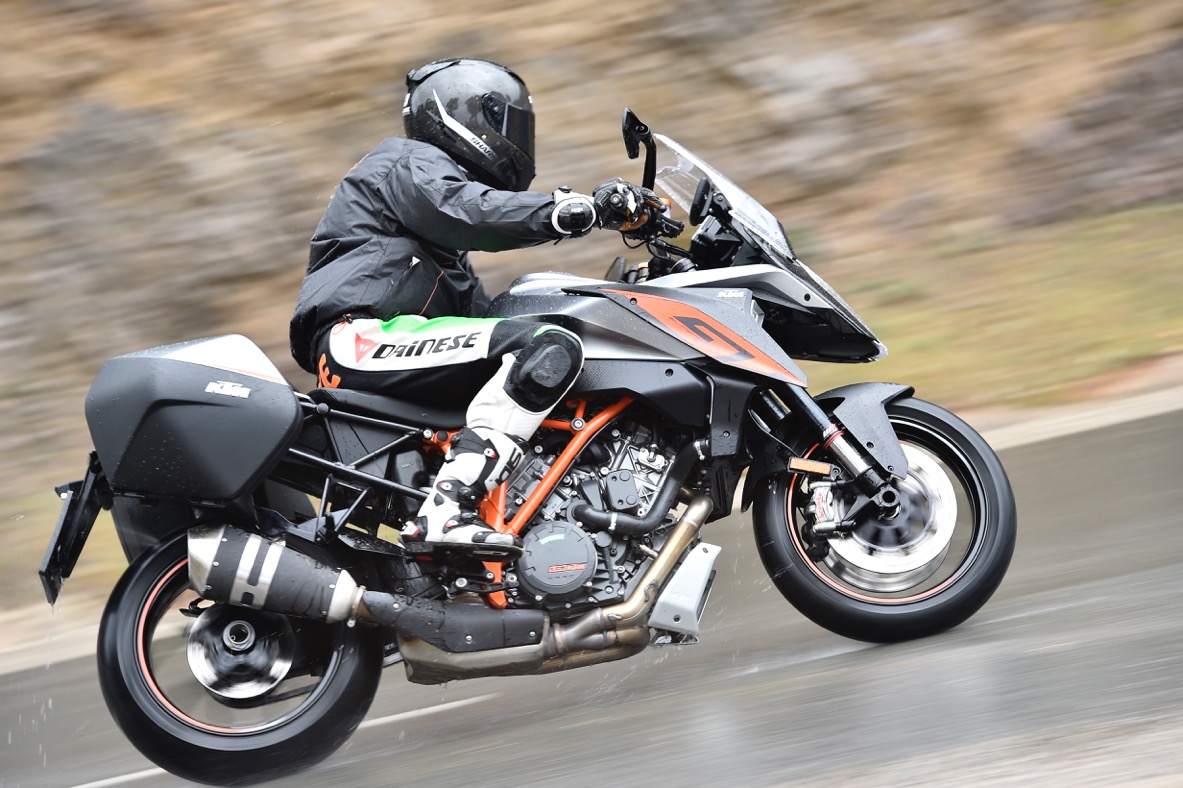

VISORDOWN Editor Steve Farrell has just been on the launch of Yamaha’s MT-03 and says it’s the latest small bike that’s fun, engaging, and yet has a power figure that’s unlikely to allow you to get into too much trouble with the law.
In other words, it’s absolutely nothing like the KTM 1290 Super Duke GT I’ve just ridden which has 173hp, over five times as much torque as the Yamaha, and is more than capable of getting you a tasty driving ban before you’ve even made it out of first gear.
Despite the abysmal riding conditions at the press launch in Majorca, we did make it out of first gear, nobody got a driving ban, and the KTM even managed to change my opinion on sports tourers. I'm certainly no longer under the impression that they’re just diluted, neutered, and compromised versions of other faster machines.
In fact the GT isn’t diluted at all, it’s based on KTM’s 1290 Super Duke R with a few sensible tweaks to make it better at that touring stuff, and that’s really about it - no lazier handling (The GT and SDR share the exact same chassis geometry) and not a detuned engine in sight. After all, KTM’s brand motto is ‘Ready to Race’, so it’s only right they take the ‘sport’ in sports tourer seriously.
And what says sport better than a 1301cc V-twin engine punting out 173hp and 106lbft of torque? Not much, is the answer. Nobody ever accused the Super Duke R of lacking any power - nobody sane, anyway - and the GT uses the same engine, albeit with new cylinder heads for improved combustion, tweaked valve timing to help with increased midrange power output and new ‘optimised’ fuel maps for smoother power delivery.
Modern hypercars like the McLaren P1 and Porsche 918 use hybrid engines because the battery-powered electric motor is able to make torque where the petrol engine can’t - the benefit is that you end up with a much wider power band and usually a more linear power curve too. If I didn’t know any better, I’d have thought the Super Duke GT had an electric motor working its magic somewhere. I can’t think of any other production engine in a motorcycle which feels as purposeful as the 1290’s in the bottom end, mid-range and top-end. There’s simply no let-up in power right up to the bike’s top speed which, if one was to hypothetically have tested on a Majorcan motorway, would indicate roughly 180mph.
Hypothetically.
And because the GT comes with an adjustable windscreen, a more padded seat, and a larger 23-litre fuel tank - which is bigger in capacity and physical size than the one fitted to the SDR and helps to improve weather protection - you can sit at high speeds for longer and in comfort without the neck ache you’re likely to get from a naked bike.
All that power is well and good in the right place at the right time, but Majorca during a thunderstorm was neither. The roads were verging on dangerous in the wet with little to no grip in some spots. The Pirelli Angel GT tyres fitted to the bike helped massively though, finding grip where there ought to have been none and doing an impressive job of offering feedback.
Still, the location and weather did offer a rather unique testing ground to put the GT’s comprehensive electronics package to the test. Silver lining and all that... Traction control for corner exits and Bosch Cornering ABS to help with corner entry became the order of the day on our test route, which started to look less like a road and more like an ice rink as hailstones saturated the tarmac. Both the traction control and Cornering ABS on the GT tie-in to KTM’s in-built Motorcycle Stability Control (MSC), which allows the systems to be lean-angle sensitive and work just as well during cornering. In theory you can grab a handful of throttle or stab at the powerful Brembo monobloc brakes at full lean and the tech should prevent you from crashing; ‘should' being the key word - I decided not to put it to the test. I felt that believing the experts at KTM - based on how well the system worked everywhere else - was a more sensible choice than potentially putting a 1290 Super Duke GT-shaped dent into a Spanish wall.
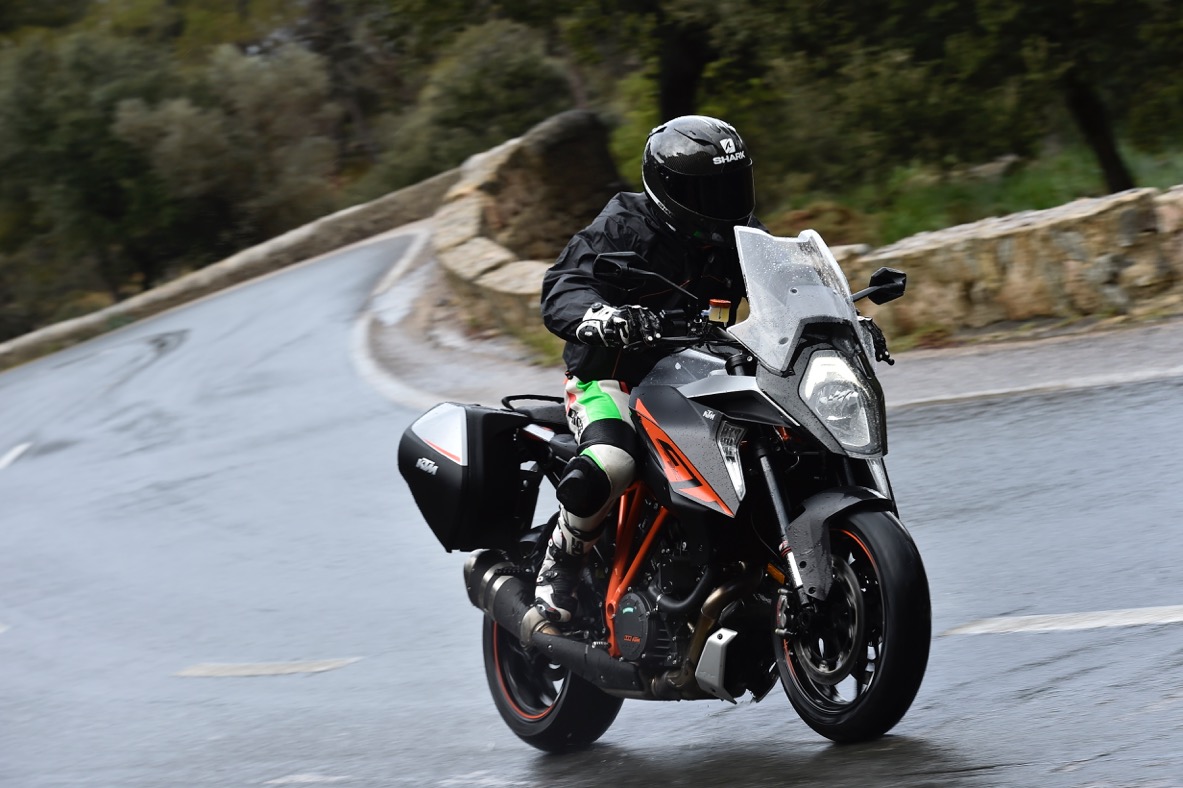
On the road, the TC is so subtle in its function and quick to intervene that sometimes you'd do well to know it's even at work. If you feel like double-checking that it actually is on, all that's needed is a quick glance at the digital dash positioned to the left of the analogue rev-counter. It displays almost every piece of information you could think of: a digital gear indicator, the tyre-pressure monitoring system, switching on the three-stage heated grips, Hill Hold Control (if you've opted for it) and changing the TC settings, amongst a plethora of other things.
Although the TC/Riding modes software is very sophisticated, it's much like other systems in that you have a few different throttle maps to choose from, some of which alter power, all of which tweak power delivery and the intrusiveness of the TC system, and of course the 'Off' button if you happen to be former GP racer Jeremy McWilliams - who was on the launch with us and didn't seem to have any issue riding at full pelt in the rain without any rider aids. Nutter.
The GT's semi-active WP suspension also has modes to choose from which alter how the Suspension Control Unit (SCU) changes the damping in the forks and shock in real-time to suit the rider's riding style and the road surface. Much of this went over my head because the suspension presentation was nothing short of sleep-inducing, but I did learn a few new things. For example, the system can react to bumps in the road within 10m/s using a solenoid valve that takes information from a swing-arm bearing and various accelerometers fitted across different sections of the bike... You've fallen asleep too, haven't you?
In all honesty none of the bikes I've ridden fitted with electronic suspension have ever felt any more impressive than a standard fork and shock, assuming the latter have been set-up properly. Peace of mind is where I feel semi-active suspension wins over the conventional stuff. Somewhere, in a lab, a nerd who knows far more about springs, fork oil, and electronics than I do has found the perfect suspension set-up and programmed it into the Super Duke GT into three simple modes: Sport, Street and Comfort. Choosing the wrong mode is about as far wrong as you can go with it.
While day-dreaming in the presentation, I noticed those nifty lights at the front of the GT. Not the 18 LED daytime running lights above the headlight, but the ones tucked within the side pods of the fuel tank. Those are cornering lights like the ones on KTM’s Super Adventure which automatically light up in sequence at 10, 20 and 30-degrees of lean to help illuminate the road and improve visibility.
Not so visible is the standard fit quick-shifter which KTM decided to house inside the transmission. The GT is the first 1290-powered bike to be fitted with the unit, which helps you power up through the gearbox without using the clutch but also allows for smoother up-shifts when you’re riding with a pillion to help prevent you clashing helmets. Other tweaks your pillion will thank you for are the lower pillion pegs, the lengthened and strengthened sub-frame with integrated pannier amounts to improve comfort, and the option of fitting a heated pillion seat from the KTM Accessories catalogue.
KTM told us the Super Duke GT project was an attempt at bridging the 'impossible gap' between fun riding, comfortable long distance travelling and impressive track day use. I can vouch for the first two and can only imagine how much of a weapon the GT would be on track, with its electronics package, razor-sharp chassis and optional extras like KTM’s Motor Slip Regulation (MSR) fitted, which compliments the slipper clutch to make rear wheel lock-ups a thing of the past on aggressive downshifts. It has all the ingredients to make it the best sports tourer on the market: sublime handling, all-day long comfort, the right ergonomics and an engine like no other.
At £15,999 on-the-road, the GT is by no means cheap and I’m still not 100% convinced that KTM’s quality of finish is up there with the likes of manufacturers such as Ducati and BMW. But if you’re thinking of a two-up trip to somewhere like the Nurburgring this year, and you both plan to arrive in utter comfort shortly before lapping the circuit at blistering pace, then this is the Ring Taxi you should be looking to buy.
Model tested: KTM 1290 Super Duke GT
Price: £15,999 on-the-road
Engine: 1301cc V-twin
Power: 173hp @9,500rpm
Torque: 106.2lbft @6,750rpm
Dry weight: 205kg
Suspension: WP semi-active suspension
Brakes: 2 x Brembo monobloc four-piston at the front, Brembo two-piston at the rear
Tyres: Pirelli Angel GT
Seat height: 835mm
Fuel capacity: 23 litres
Colours: Orange/Anthracite

